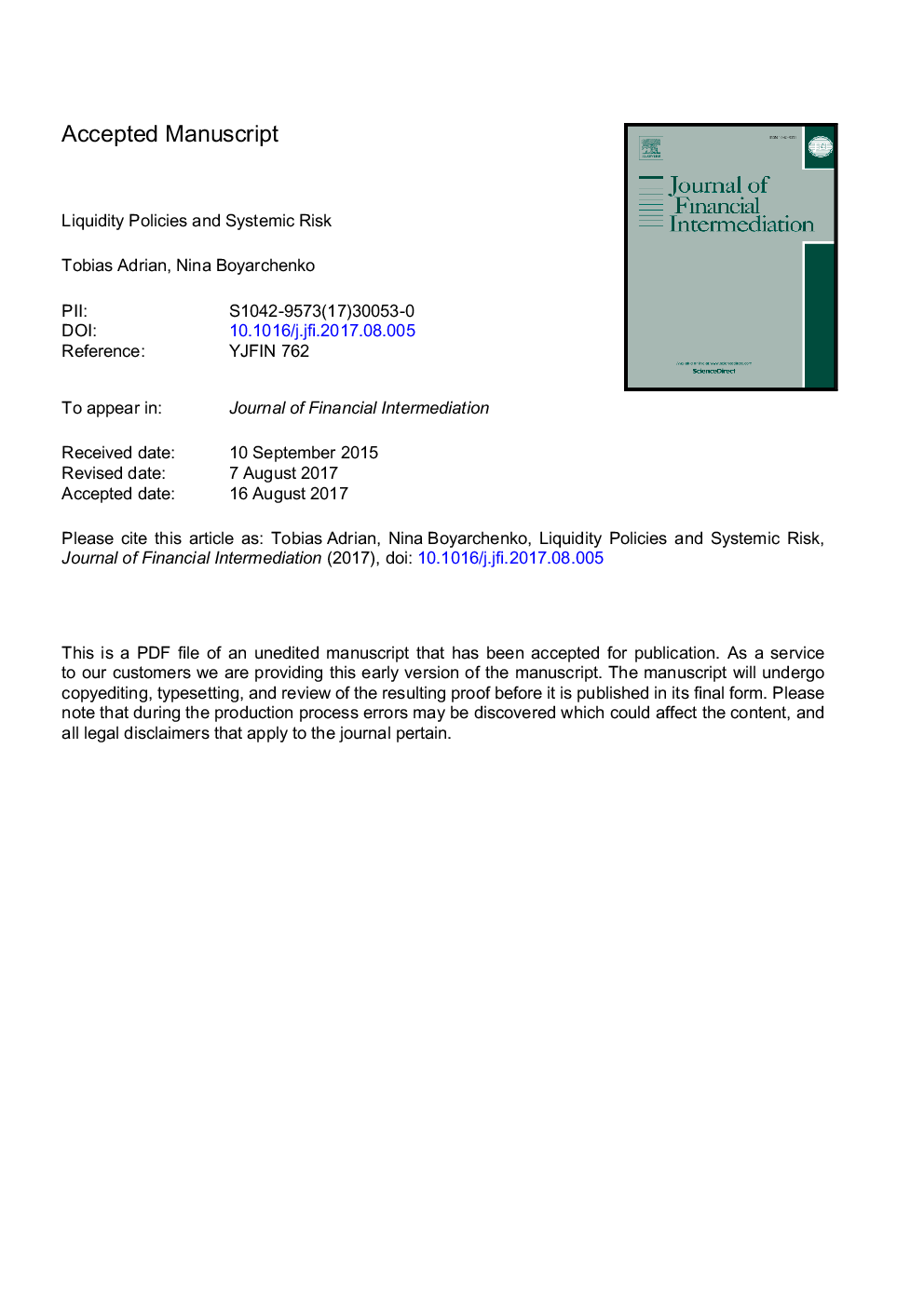| Article ID | Journal | Published Year | Pages | File Type |
|---|---|---|---|---|
| 8960879 | Journal of Financial Intermediation | 2018 | 47 Pages |
Abstract
Bank liquidity shortages associated with the growth of wholesale-funded credit intermediation has motivated the implementation of liquidity regulations. We analyze a dynamic stochastic general equilibrium model in which liquidity and capital regulations interact with the supply of risk-free assets. In the model, the endogenously time varying tightness of liquidity and capital constraints generates intermediaries' leverage cycle, influencing the pricing of risk and the level of risk in the economy. Our analysis focuses on liquidity policies' implications for households' welfare. Within the context of our model, liquidity requirements are preferable to capital requirements, as tightening liquidity requirements lowers the likelihood of systemic distress without impairing consumption growth. In addition, we find that intermediate ranges of risk-free asset supply achieve higher welfare.
Related Topics
Social Sciences and Humanities
Business, Management and Accounting
Strategy and Management
Authors
Tobias Adrian, Nina Boyarchenko,
